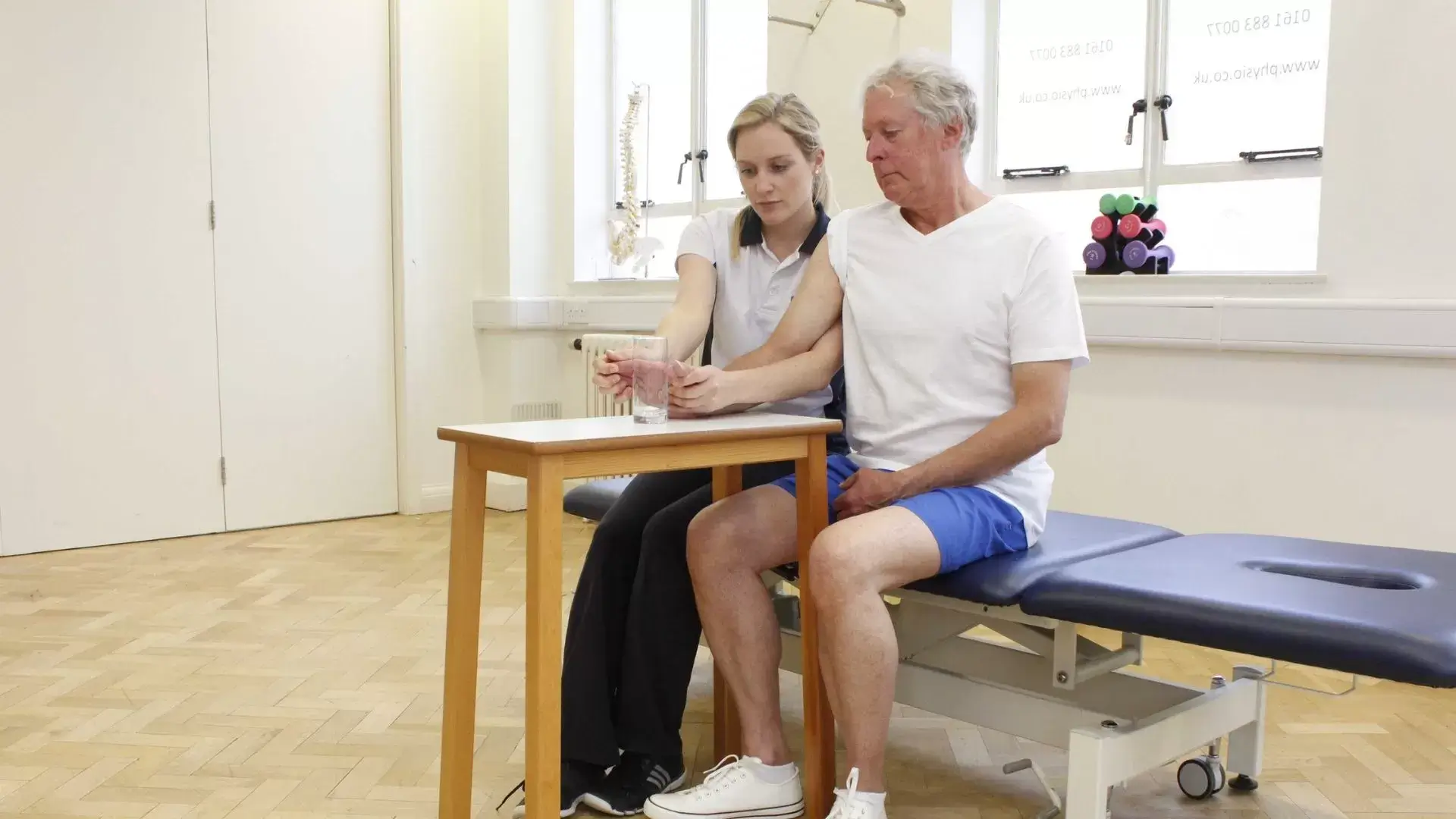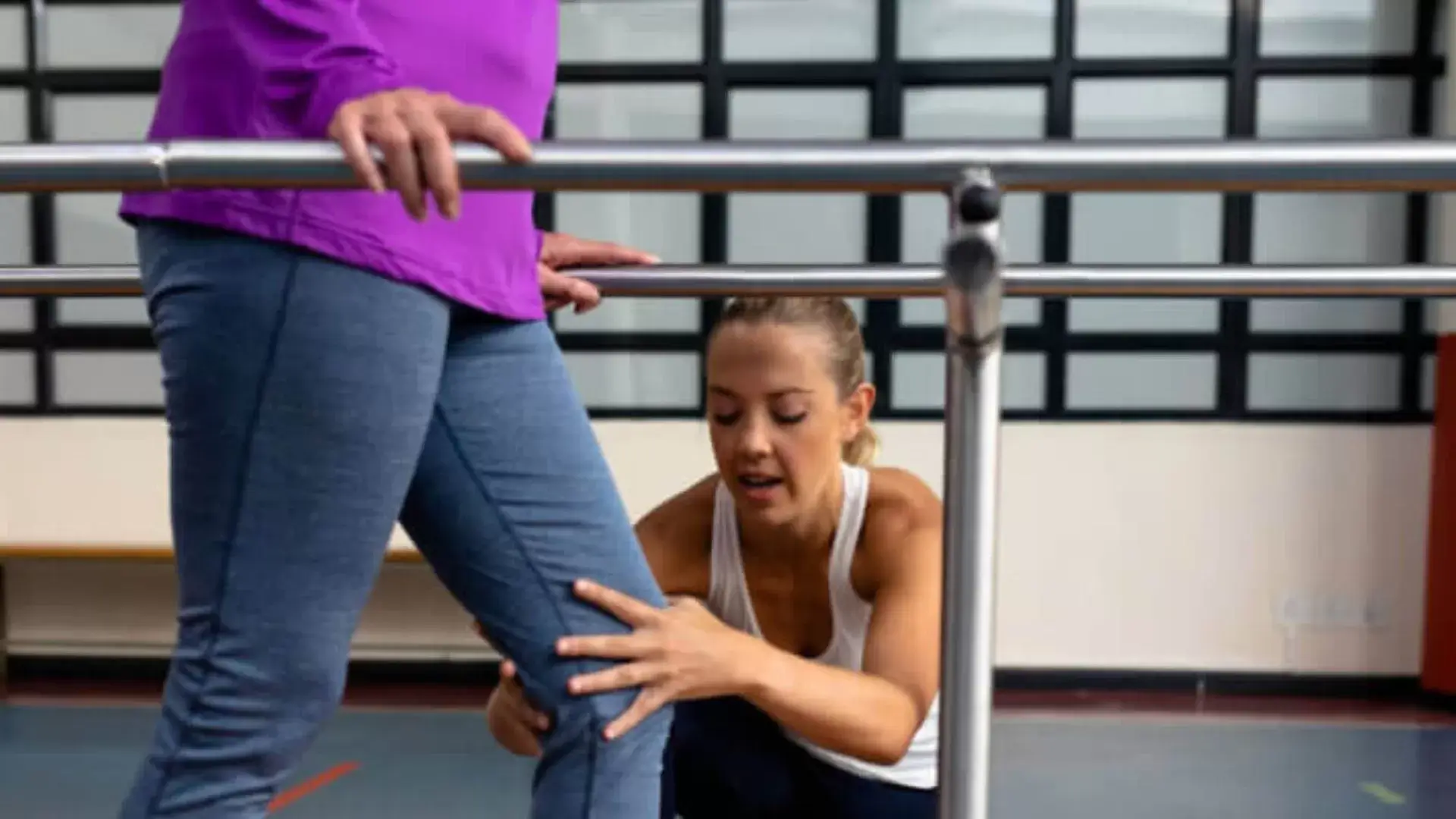Physiotherapy for Spinal Misalignment plays an essential role in addressing spinal misalignment, promoting overall spinal health. By using targeted exercises and manual therapy, we can help restore proper alignment and alleviate discomfort. Our approach not only focuses on correcting imbalances but also on strengthening supporting muscles to prevent future issues. We assess each patient’s unique needs, ensuring personalized treatment plans that empower them in their recovery journey. Combining physiotherapy with chiropractic care often yields better long-term outcomes. If you’re curious about how we can support your spinal health, there’s much more to explore on this topic.

At Physio Chiro Clinic, we combine the art of physiotherapy and chiropractic care to create a holistic approach that addresses spinal misalignment and supports your overall wellness. Our physiotherapy and chiropractic services focus on improving spinal health through evidence-based techniques tailored to your unique needs.
When we identify spinal dysfunction, we utilize chiropractic adjustments and spinal manipulation to promote spinal realignment. This process not only alleviates back pain but also contributes to enhanced mobility and function. In conjunction, our physiotherapy sessions emphasize postural correction and spinal rehabilitation, helping you regain strength and stability.
We believe that effective treatment requires collaboration and communication. By working closely with you, we guarantee that you understand the underlying causes of your discomfort and the steps we’ll take to provide back pain relief. Our team is committed to empowering you with knowledge and tools that foster long-term well-being.
Through a combination of targeted exercises, manual therapies, and education, we aim to restore your spinal health and enhance your quality of life. Together, we’ll initiate a journey towards ideal wellness, addressing spinal misalignment and promoting functional movement.
Spinal misalignment can stem from various factors, including poor posture, injury, and repetitive strain, each affecting our overall health and function. When we experience postural misalignment, it can lead to vertebral misalignment, resulting in spinal dysfunction and a cascade of issues. For instance, poor posture often contributes to spinal instability, which can further exacerbate spinal inflammation and nerve compression.
As we explore the causes, it is crucial to recognize how these factors interconnect. Spinal mobility issues can arise when our alignment is compromised, limiting our ability to perform daily activities comfortably. This dysfunction may manifest in the form of pain or discomfort, prompting many of us to seek out chiropractic therapy for relief and correction.
Many of us may not realize that symptoms like persistent back pain, stiffness, and reduced mobility can be signs of spinal misalignment. When we experience chronic back pain or neck pain, it might stem from issues such as vertebral subluxation or spinal joint dysfunction. These conditions can lead to spinal deviation and altered spinal curvature, causing discomfort and limiting our daily activities.
We should be aware of other spinal misalignment symptoms as well. For instance, nerve impingement can occur when misaligned vertebrae compress surrounding nerves, resulting in tingling or numbness in the limbs. If we notice any unusual changes in posture or alignment, it may indicate a need for attention.
Spinal support is vital in maintaining proper alignment, and recognizing these symptoms early is essential for effective intervention. Engaging in spinal alignment therapy can help us address these issues before they worsen. By acknowledging the signs of spinal misalignment, we can take proactive steps toward improving our overall health and well-being, ensuring that we’re not just managing symptoms but also working towards long-term relief and better spinal health.
Physiotherapy plays an essential role in correcting spinal misalignment by utilizing targeted exercises, manual techniques, and education to restore proper function and alignment. Through tailored spinal therapy, we address conditions like scoliosis, cervical misalignment, thoracic misalignment, and lumbar misalignment.
Our approach often includes spinal decompression techniques that alleviate pressure on the vertebrae, promoting ideal spinal alignment. We also emphasize core strengthening exercises, which are critical for stabilizing the spine and supporting healthy posture. Additionally, we integrate spinal flexibility exercises to enhance the range of motion, allowing for a more adaptive response to daily activities.
Education is another essential component of our practice. By informing patients about the importance of spinal wellness, we empower them to take an active role in their recovery. We believe that understanding one’s body and how it works can greatly impact overall well-being.

To effectively address spinal misalignment, accurate diagnosis through clinical evaluations and imaging techniques is essential for tailoring appropriate treatment plans. When we evaluate our patients, we start by examining spinal alignment through physical examinations to identify any spinal imbalances or distortions. Conditions like spinal subluxation can lead to nerve irritation and pain, impacting overall well-being.
Imaging, such as X-rays or MRIs, helps us visualize spinal biomechanics, revealing issues like spinal compression that may not be apparent during physical evaluations. These tools enable us to understand the underlying causes of core instability, which contributes to persistent discomfort and dysfunction. We also emphasize the importance of ergonomic posture, both in daily activities and during our evaluations, as it plays a vital role in spinal health.
Effective postural correction therapy plays an essential role in restoring spinal alignment and enhancing overall function. By addressing issues like lordosis, kyphosis, and pelvic tilt, we can greatly reduce spinal muscle tension and improve spinal flexibility. This therapy focuses on teaching patients how to maintain proper posture in daily activities, which is vital for preventing conditions such as functional scoliosis and upper back pain.
In our sessions, we utilize targeted exercises and stretches that help to strengthen weak muscles while loosening tight ones. This balanced approach not only aids in realigning the spine but also enhances overall body mechanics. Research shows that consistent postural correction therapy can lead to lasting improvements in spine alignment, reducing the risk of chronic pain and dysfunction.
Furthermore, we often collaborate with chiropractic spine care professionals to guarantee a holistic approach to each patient’s treatment plan. By combining our expertise, we maximize the benefits of therapy, promoting long-term health and well-being. Ultimately, our goal is to empower patients to take charge of their posture, leading to improved quality of life and functional independence.
Building on the foundation of postural correction, manual therapy techniques offer targeted strategies for spinal realignment, addressing misalignments through hands-on approaches that enhance mobility and alleviate discomfort. Through spinal mobilization and manipulation, we can effectively treat spine imbalances caused by factors like poor spinal posture and conditions such as herniated or bulging discs.
In our practice, we emphasize the importance of maintaining spinal nerve health, as misalignments can lead to pinched nerves, resulting in pain and dysfunction. By employing manual therapy techniques, we facilitate spine correction and restore normal movement patterns. This is particularly beneficial for individuals with structural scoliosis, where targeted interventions can greatly improve alignment and reduce discomfort.
Our approach is patient-centered, focusing on individual needs and conditions. We carefully assess each patient’s situation, tailoring our manual therapy techniques to address their specific spinal issues. Ultimately, our goal is to enhance our patients’ quality of life by improving spinal health, alleviating pain, and promoting overall well-being through effective and compassionate manual therapy.
Regularly incorporating strengthening exercises into our routine can greatly enhance spinal stability, supporting proper alignment and reducing the risk of injury. By targeting key muscle groups, we can alleviate issues such as sacral misalignment and spinal stenosis, which often stem from muscle imbalances. Strengthening the core and back muscles not only helps to relieve spinal cord pressure but also prevents conditions like degenerative disc disease and spinal kyphosis.
Exercises focusing on the lower back, abdomen, and even the shoulders play an essential role in maintaining our posture, especially in an age where tech neck and forward head posture are prevalent. These exercises can reduce lower back pain and mid-back pain, enhancing our overall well-being.
Incorporating movements like planks, bridges, and rows strengthens our postural muscles, counteracting the effects of sedentary lifestyles. As we build strength, we also improve our body mechanics, reducing the risk of future injuries. Ultimately, a consistent strengthening routine empowers us to take control of our spinal health, ensuring we move through life with stability and confidence.

Muscle imbalances can greatly contribute to spinal dysfunction, making it essential for us to recognize and address these imbalances to promote ideal spinal health. At our clinic located at 123 ABC Road, Oakville, Ontario, we often see patients experiencing conditions like sciatica and facet joint dysfunction, which can stem from these imbalances.
When we evaluate our patients, we focus on postural issues, such as rounded shoulders, which can lead to undue stress on the spine. By identifying tight and weak muscle groups, we can create a tailored physiotherapy program that aims to restore balance. This includes targeted stretching and strengthening exercises designed to alleviate pain and improve functional movement.
Our goal is to empower our patients by providing education about their conditions and involving them in their rehabilitation process. By addressing muscle imbalances and promoting proper alignment, we can help alleviate symptoms and enhance overall spinal health. If you’re dealing with spinal dysfunction, don’t hesitate to reach out to us at 111-111-1111. Together, we can work towards a healthier, pain-free spine.
Physiotherapy plays an essential role in managing conditions like scoliosis, kyphosis, and lordosis, helping us correct postural deviations and improve overall spinal health. Through tailored exercise programs, we can strengthen the muscles supporting the spine, ensuring better alignment and function. Research consistently shows that specific exercises can enhance flexibility and stability, which is important for those dealing with these conditions.
In our sessions, we focus on individualized assessments to identify the unique needs of each patient. We utilize techniques like manual therapy and postural education to improve spinal alignment and alleviate discomfort. By integrating breathing exercises and strengthening routines, we not only address the physical aspects of these conditions but also enhance our overall wellbeing.
Furthermore, it’s essential to empower patients with knowledge about their conditions. We encourage open communication, ensuring everyone understands their treatment plan and goals. This collaborative approach fosters a supportive environment where we can work together towards achieving ideal spinal health. By actively engaging in physiotherapy, we can greatly improve our quality of life while effectively managing the challenges posed by scoliosis, kyphosis, and lordosis.
Spinal decompression therapy offers a promising solution for alleviating nerve pain and enhancing overall spinal health. As we explore this treatment, we find that it focuses on relieving pressure on the spinal discs, which can help reduce nerve compression. This approach is particularly beneficial for those suffering from conditions like herniated discs or sciatica.
During our sessions, we utilize a specialized table that gently stretches the spine. This gentle traction creates space between the vertebrae, allowing herniated discs to retract and potentially reducing inflammation. Research supports that this therapy can lead to significant pain relief and improved mobility, which is crucial for our patients’ daily activities.
Moreover, spinal decompression therapy is often combined with other physiotherapeutic techniques, such as manual therapy and exercise prescription. This holistic approach guarantees that we address not only the symptoms but also the underlying causes of spinal misalignment.
In our experience, many patients report feeling more comfortable and functional after a series of treatments. By prioritizing patient-centered care, we empower individuals to actively participate in their recovery and regain control over their spinal health.
As we increasingly rely on technology, many of us are experiencing the detrimental effects of tech neck and forward head posture, which can lead to discomfort and long-term musculoskeletal issues. This condition typically occurs when we lean our heads forward while looking at screens, placing excessive strain on our neck and upper back.
In our practice, we focus on a combination of education, exercises, and manual therapy to address these issues effectively. First, we educate our patients about proper ergonomics, encouraging them to adjust their workstations to promote better posture. Simple adjustments, like raising screens to eye level, can make a significant difference.
Next, we guide our patients through specific stretching and strengthening exercises aimed at correcting muscle imbalances. Strengthening the muscles in the upper back and neck while stretching the chest muscles can help restore proper alignment.
Manual therapy techniques, such as soft tissue mobilization and joint mobilization, can also alleviate tension and improve range of motion. By taking a holistic, patient-centered approach, we empower our patients to actively participate in their recovery and maintain spinal health for the long term.
Combining chiropractic care with physiotherapy allows us to create a thorough approach to enhancing spinal health and alleviating discomfort. By integrating these two disciplines, we can address spinal misalignment from multiple angles, providing a detailed treatment plan that promotes ideal recovery.
Chiropractors focus on spinal manipulation to restore proper alignment, reducing nerve interference and improving mobility. This hands-on approach can help us relieve pain and enhance overall function. Meanwhile, physiotherapists utilize targeted exercises and modalities like ultrasound or electrical stimulation to strengthen muscles and improve flexibility. These methods complement chiropractic adjustments, reinforcing the spine’s stability.
Research supports this integrative approach, showing that patients who engage in both chiropractic and physiotherapy often experience faster recovery times and better long-term outcomes. We believe that fostering communication between chiropractors and physiotherapists is essential, ensuring a cohesive treatment strategy tailored to each individual’s needs.
Ultimately, our goal is to empower patients to take an active role in their spinal health. By combining our expertise, we can guide you toward a pain-free, functional lifestyle while addressing the underlying causes of spinal misalignment. Together, we can achieve lasting improvements in your overall well-being.
Creating a supportive environment through ergonomic and lifestyle modifications is essential for maintaining spinal wellness and preventing discomfort in our daily activities. By making simple adjustments in our workspace and daily routines, we can greatly reduce the risk of spinal misalignment and improve our overall health.
First, let’s evaluate our workstations. Ensuring our chairs support the natural curve of our spine and keeping our computer screens at eye level helps minimize strain. We should also remember to take regular breaks, standing up or stretching every hour to promote circulation and relieve tension.
In our daily lives, carrying heavy bags on both shoulders can distribute weight evenly and prevent muscle imbalances. Incorporating core-strengthening exercises into our routines also aids in supporting the spine. Additionally, practicing good posture while sitting, standing, or lifting can prevent undue pressure on our spinal structures.
Moreover, staying active through regular physical activity not only enhances our flexibility but also strengthens the muscles around our spine. By collectively committing to these ergonomic and lifestyle changes, we can create an environment that fosters spinal wellness and enhances our quality of life.
Implementing long-term strategies to prevent spinal misalignment requires a proactive approach to our daily habits and routines. We need to prioritize maintaining proper posture, especially during activities like sitting at a desk or using our smartphones. Regular breaks to stretch and adjust our positions can greatly benefit our spinal health.
Incorporating strength and flexibility exercises into our weekly routine is essential. Activities like yoga or Pilates not only enhance core stability but also promote spinal alignment. Research shows that strong core muscles support our spine, reducing the risk of misalignment.
Additionally, we should pay attention to our sleeping habits. Choosing a mattress and pillow that provide adequate support can make a considerable difference in how our spine is positioned during sleep.
Lastly, staying mindful of our body mechanics when lifting heavy objects or engaging in physical activities is vital. Using our legs rather than our back to lift can prevent undue stress on our spine.
Booking a physiotherapy consultation is an important step for us to effectively address and treat spinal misalignment, enabling us to receive personalized care tailored to our unique needs. During our consultation, a qualified physiotherapist will conduct a detailed assessment of our posture, movement patterns, and any symptoms we may be experiencing. This extensive evaluation helps identify the underlying causes of our spinal misalignment.
Together, we’ll discuss our medical history and lifestyle factors that could be contributing to our condition. By understanding our specific situation, the physiotherapist can develop a targeted treatment plan that may include manual therapy, exercises, and education on proper body mechanics. This collaborative approach empowers us to actively participate in our recovery process.
Additionally, regular follow-ups are vital for monitoring our progress and making necessary adjustments to our treatment plan. Research shows that individuals who engage in physiotherapy for spinal misalignment often experience improved mobility, reduced pain, and enhanced quality of life. By prioritizing this consultation, we’re taking a proactive step toward achieving a healthier spine and overall well-being. Let’s take the first step together and book our consultation today!
When we consider treatment durations, it really depends on the individual and their specific needs. Typically, we find that a course of treatment can range from a few weeks to several months, depending on factors like the severity of the condition and our response to therapy. Regular assessments help us adjust our approach as needed, ensuring we’re on the right track to achieve our goals together. Staying committed is key to our success!
Absolutely, spinal misalignment can impact our overall health and wellbeing. When our spine’s not properly aligned, it can lead to pain, reduced mobility, and even affect our body’s ability to function at its best. We might experience issues like headaches, fatigue, or digestive problems. By addressing these misalignments, we can improve our physical health, enhance our mood, and boost our energy levels, ultimately leading to a better quality of life. It’s crucial to prioritize our spinal health.
When considering any treatment, it’s essential we weigh the risks involved. In physiotherapy, there can be minor side effects, such as temporary soreness or discomfort. However, these are generally outweighed by the benefits. We’re dedicated to ensuring our treatment is safe and tailored to our needs. It’s important we communicate openly with our therapist about any concerns, so we can make informed decisions together and minimize potential risks.
When we attend physiotherapy sessions, it’s important to wear comfortable, breathable clothing that allows for easy movement. We should opt for loose-fitting pants and a t-shirt or tank top. Footwear matters too; supportive shoes can help us stay stable during exercises. It’s best to avoid restrictive clothing or accessories that might hinder our range of motion. Ultimately, we want to feel at ease, so we can focus on our treatment and recovery.
To maintain alignment at home, we can focus on our posture throughout daily activities. It’s crucial to sit straight, use ergonomic furniture, and take regular breaks to stretch. Incorporating gentle exercises, like yoga or pilates, can strengthen our core and improve flexibility. We should also be mindful of our sleeping positions, using supportive pillows. Staying consistent with these practices will help us reinforce what we learn in our sessions and promote overall well-being.
Reach out to us today to book an appointment or learn more about our services. Our friendly team is here to answer your questions and help you take the first step toward improved health and wellness.
(647) 372-1209

At our Physio-Chiro Clinic, we are dedicated to providing personalized care that addresses the root cause of your discomfort. With a team of experienced physiotherapists and chiropractors, we focus on restoring your mobility, relieving pain, and enhancing your overall well-being.